Don’t Forget to Look Up: The Ultimate Guide to Designing Your Ceiling
You know, after years of walking into people’s homes, the very first thing I do is look up. It’s a funny habit, I guess. I picked it up from an old-school pro I worked with ages ago. He used to say, “The ceiling tells you everything you need to know about a house’s ambition.” And honestly? He was spot on. Most of us just see a lid on a box, something to paint white and forget about. But a ceiling is so much more—it’s the fifth wall, a huge canvas that can completely change a room’s light, height, and even how it sounds.
In this article
I’ve seen ceilings do things that wall color can only dream of. I remember one project, a classic bungalow with those standard eight-foot ceilings that can feel a bit low. The homeowner was desperate for an airy, open vibe. Instead of just slapping on some paint, we clad the ceiling in pale, wide-plank oak and continued it right down the main wall behind the sofa. That one move completely blurred the line between the wall and ceiling, and wow… the room suddenly felt taller, grander, and so much more intentional. It’s proof that this forgotten surface is key. So, let’s talk about how to move beyond basic white and make smart choices for your own ceilings.
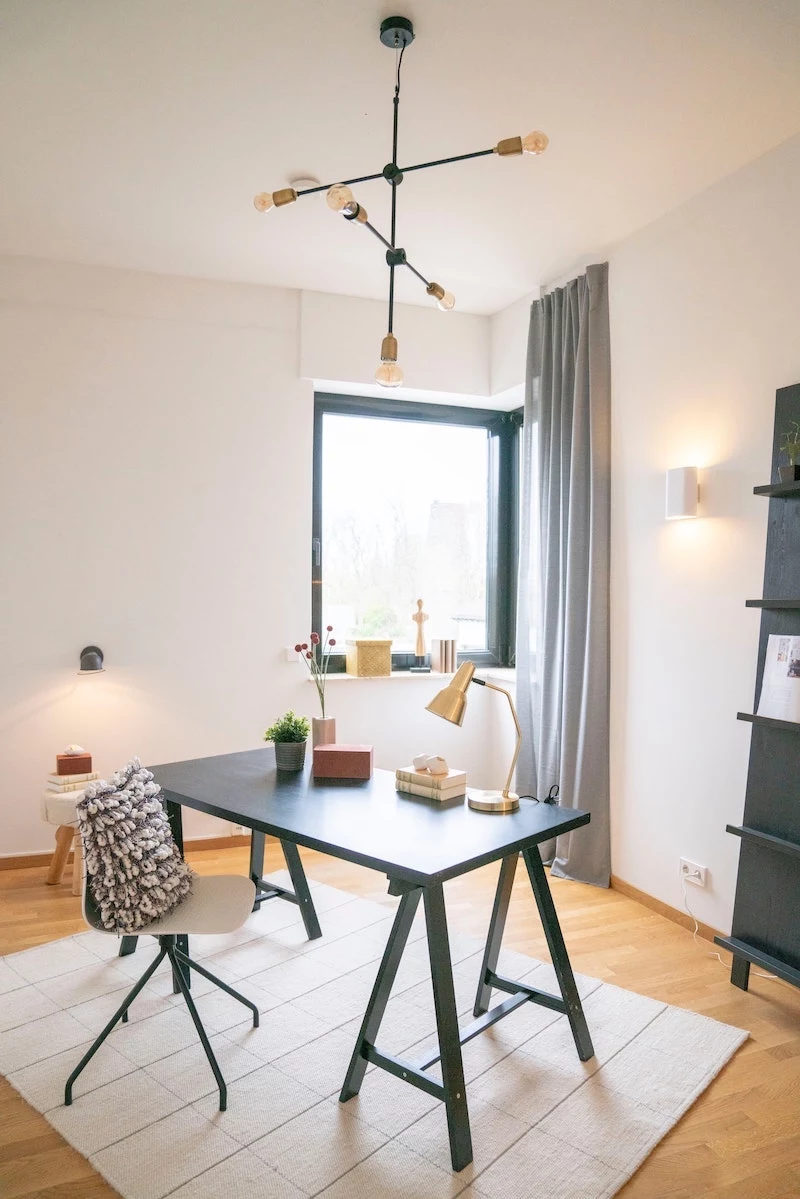
First Things First: What Your Ceiling Is Actually Doing
Before you even think about paint or fancy fixtures, you’ve got to respect the ceiling’s main jobs: holding things up, managing light, and controlling sound. Skipping this part is how simple projects turn into costly nightmares. This isn’t just boring theory; it’s the foundation for a design that works.
What’s Hiding Up There?
Your ceiling isn’t just a sheet of drywall. It’s a whole system. Above that flat surface, you have joists—the wooden bones of your floor or roof structure. The absolute first rule is to figure out which way those joists run. You can usually tell by popping your head into the attic or, much easier, by using a good quality stud finder.
A quick tip for using a stud finder: don’t just swipe it once. Start in a corner and slide it slowly across the ceiling. Use a pencil to mark where it beeps on, and where it beeps off. The space in between is your joist (usually 1.5 inches wide). Keep going, and you’ll find the next one, typically 16 or 24 inches away. Knowing this is everything. Want to hang a heavy chandelier? You HAVE to anchor it to a joist or install special blocking between them. I’ve seen the aftermath of a 70-pound fixture hung only in drywall—it’s not pretty. A licensed electrician can install a fan-rated electrical box for about $200-$400, a small price for peace of mind.
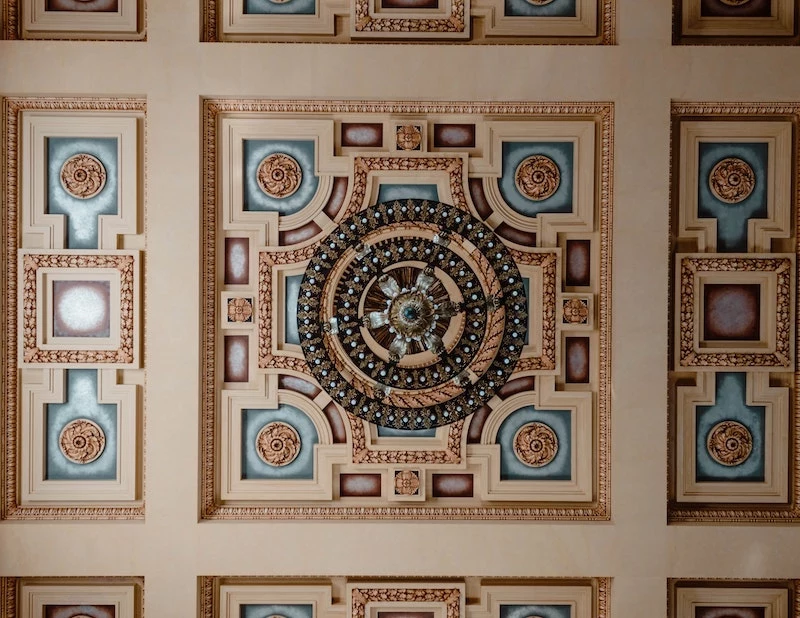
How Light Bounces Around
The color and finish of your ceiling are like a dimmer switch for the whole room. We use a technical term called Light Reflectance Value (LRV), but all it means is how much light a surface bounces back. Standard flat white ceiling paint has a high LRV, reflecting 80-90% of light. This is why it’s a go-to choice: it makes rooms feel brighter and bigger. It’s safe and it works, especially if you don’t have a ton of natural light.
But a dark ceiling can be a powerful design tool. A deep navy blue or charcoal gray absorbs light, which can make a bedroom with really tall ceilings feel cozier and more intimate, visually lowering the space. Try that in a room with low ceilings, though, and you’ll create a gloomy cave. Texture matters, too. A super-smooth plaster ceiling reflects light like a mirror, while even the slight texture from a paint roller will soften it and hide minor flaws.

Shhh… Your Ceiling is Listening
Ever been in a big, open-plan room with wood floors and lots of windows where conversations just echo and clang around? That’s often because the ceiling is a giant, flat, hard surface acting like a sound mirror. It’s a super common complaint in modern homes.
The pros tackle this by adding things that either absorb or diffuse sound. Absorption is easy to understand—think soft stuff, like acoustic tiles or fabric panels in a home theater. A more stylish solution is diffusion. A coffered ceiling, with its grid of beams, breaks up sound waves and scatters them instead of bouncing them straight back down. Even just adding a few faux wood beams can make a noticeable difference in how a room sounds, making it feel more comfortable and less like an auditorium.
Beyond Popcorn: Materials That Make a Statement
Ah, the popcorn ceiling. It was everywhere for a few decades for one simple reason: it was a cheap and incredibly fast way for builders to hide messy drywall work. But let’s be real, it traps dust, looks dated, and is a nightmare to patch.
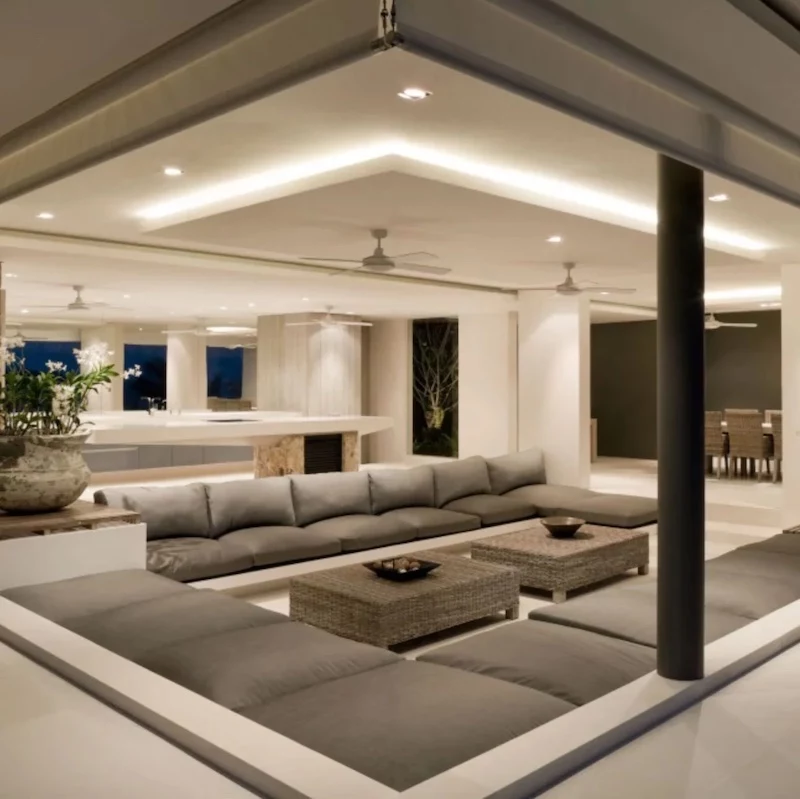
Heads Up! A Critical Safety Warning
This is important. If your home was built before the mid-1980s and has popcorn texture, you have to assume it contains asbestos until proven otherwise. Messing with it—scraping, sanding, even drilling into it—can release harmful fibers into the air. Do not try to remove it yourself without testing. You can buy a DIY test kit for $10-$50 at a hardware store, or you can hire a certified asbestos abatement company to take a sample for you, which might run $150-$300. If it tests positive, please, hire the pros. They have the equipment and training to remove it safely. It’s a serious health risk you should never, ever gamble with.
Modern Ceiling Ideas You’ll Love
Once you have a safe, flat canvas, the fun begins. Here are a few great options that aren’t just plain paint:
- A Flawlessly Smooth Skim Coat: This is the gold standard for a luxe, smooth ceiling. A pro applies thin layers of plaster over the whole surface, creating a glass-like finish. It’s labor-intensive and requires serious skill, so expect to pay between $3 and $7 per square foot. But if you’re dreaming of a high-gloss, reflective ceiling, this is the only way to go.
- Warm Wood Planking: Tongue-and-groove boards add incredible character. Pine is a budget-friendly choice that you can paint for a clean look or stain for a rustic feel, typically costing $4 to $8 per square foot for materials. Cedar adds a gorgeous color and a subtle, pleasant scent. This is a doable DIY for a patient, handy person, but you’ll definitely need a helper.
- Pressed Metal Tiles: These tiles add an instant vintage or industrial vibe. They’re surprisingly lightweight and come in all sorts of finishes, from classic tin to copper to pre-painted colors. They’re fairly easy to install over a flat surface and can be a great way to add texture and reflect light. Material costs can range from $8 to over $20 per square foot, depending on the metal and complexity.
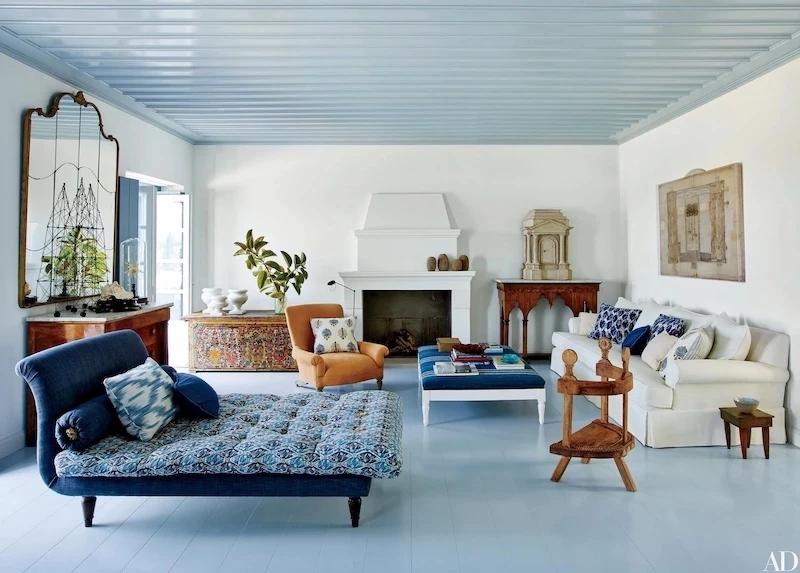
Working with Your Room’s Height
The best ceiling designs work with a room’s proportions, not against them. Here’s a simple guide based on height.
For Low Ceilings (Under 8 feet)
The goal here is to create an illusion of height. Paint the ceiling a crisp white or even the exact same light color as the walls. This blurs the boundaries and tricks the eye into seeing a taller space. Avoid big, chunky hanging lights; stick to thin flush-mounts or wall sconces that cast light upward. And if you use crown molding, keep it simple and small.
A fantastic weekend project for low ceilings? Take your wall color and ask the paint store to mix it at 50% strength for the ceiling. It gives you a soft, cohesive look that feels way more custom than stark white, all for the price of a can of paint!
For Standard Ceilings (8-9 feet)
This is the sweet spot. You have flexibility. You can use a nice, substantial crown molding (a good rule of thumb is about 1 inch of molding height for every foot of ceiling height). This is also the perfect height for a tray ceiling, where a section is recessed upward, which adds architectural interest and is a great spot to hide soft, ambient LED lighting.
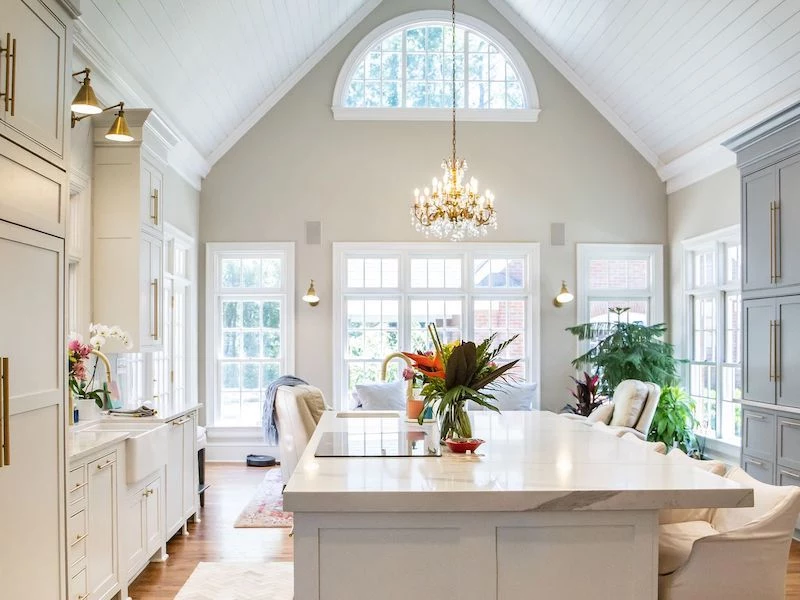
For High Ceilings (10 feet and up)
A high ceiling feels luxurious, but it can also feel cold and impersonal. You need to bring in some human-scale detail. A coffered ceiling with a grid of beams is a classic choice that adds rhythm and dramatically improves sound. Exposed beams, whether real reclaimed wood or lightweight faux beams, draw the eye up while also making the space feel more grounded. Don’t be afraid of a slightly darker or warmer paint color up there to make the room feel more inviting.
Let There Be (Good) Light
Please, I’m begging you, don’t fall into the trap of the
Inspirational Gallery
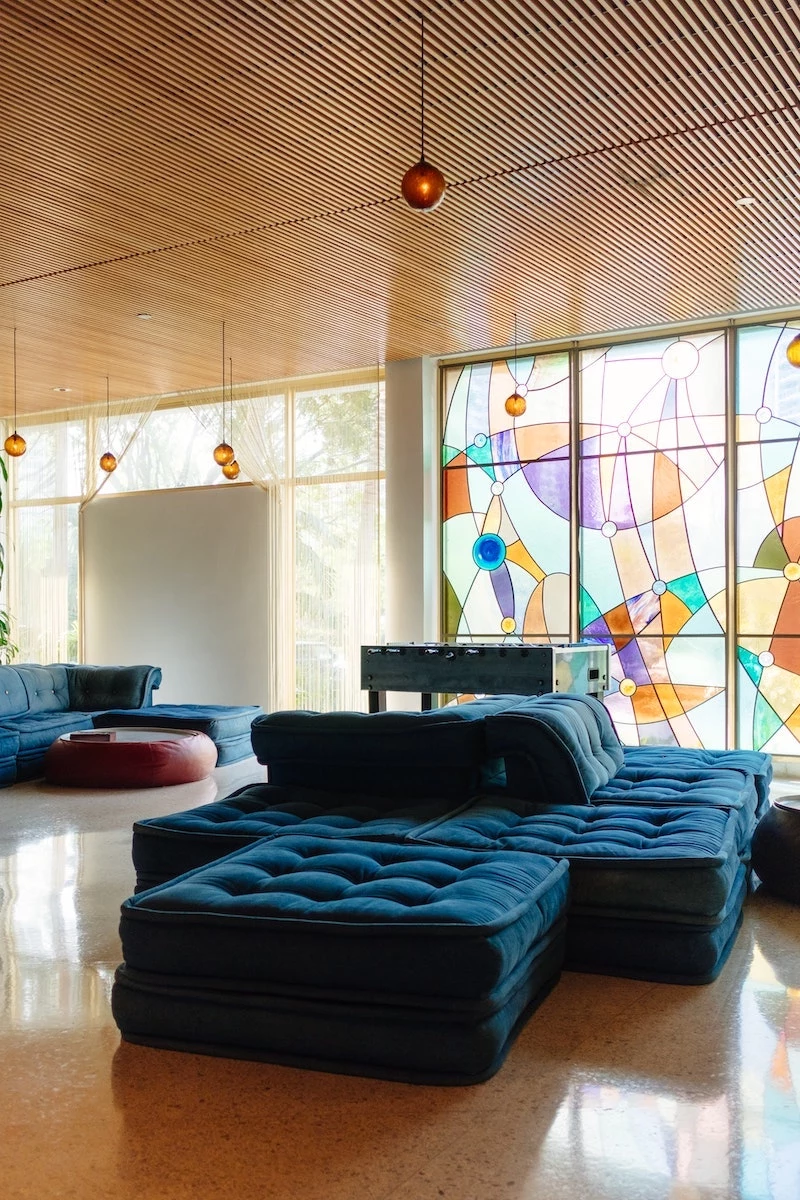
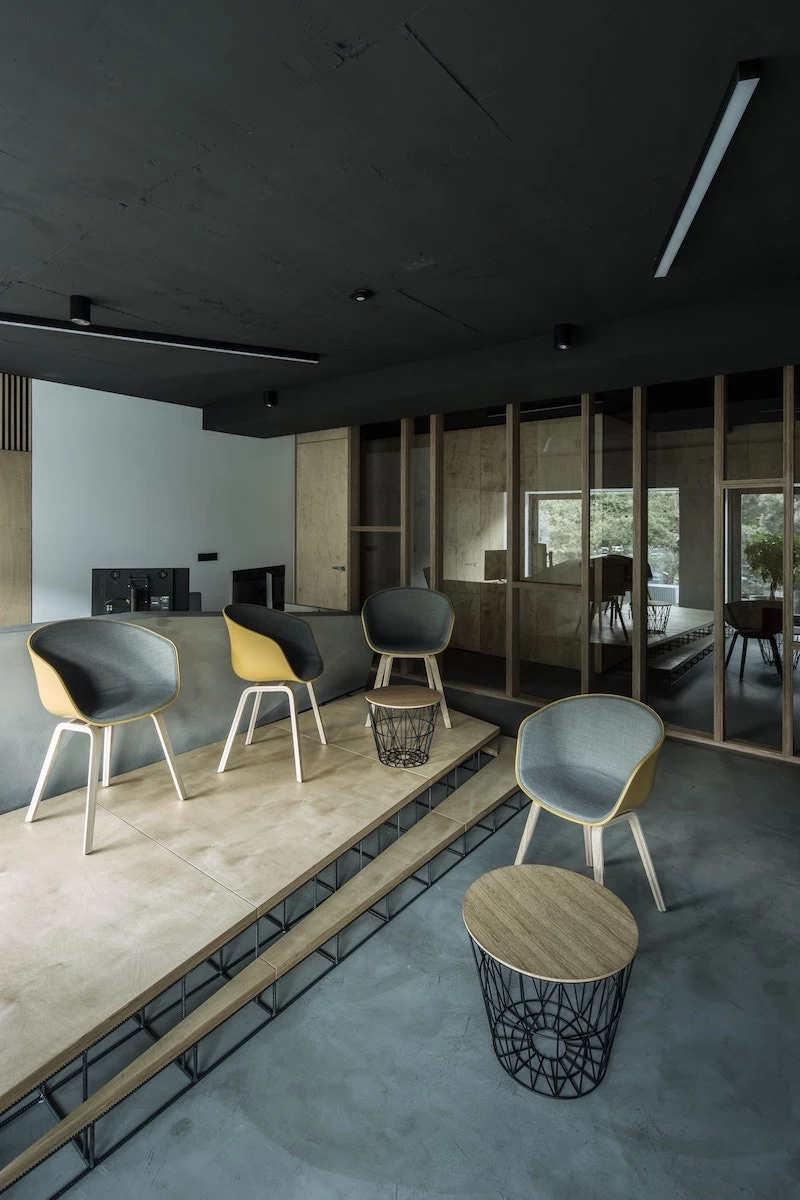
The Dark Ceiling Gamble: Painting a ceiling in a deep, moody color like Benjamin Moore’s Hale Navy or Farrow & Ball’s Railings can be a masterstroke. It creates an intimate, cozy cocoon, making high ceilings feel less cavernous and adding instant drama. It’s the perfect choice for bedrooms or dining rooms where you want to foster a sense of closeness.
The High-Gloss Illusion: A ceiling with a high-gloss or lacquer finish, even in a light color, acts like a mirror. It bounces light around the room, making the space feel brighter and the ceiling itself appear higher. This trick works wonders in rooms with limited natural light or lower ceilings, adding a layer of unexpected sophistication.
The takeaway? Don’t just think about color, think about finish. The interplay of light is just as important.
A well-designed acoustic ceiling can absorb up to 70% of sound reverberation.
This isn’t about chunky foam tiles from a 1980s office. Modern acoustic solutions are design-forward. Think of elegant wood-slat panels that add warmth and texture, or stylish felt baffles that hang like art installations. Brands like Armstrong offer










